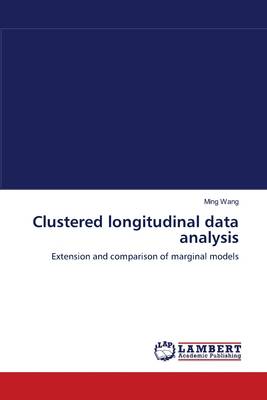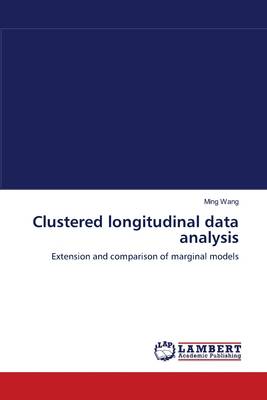
- Afhalen na 1 uur in een winkel met voorraad
- Gratis thuislevering in België vanaf € 30
- Ruim aanbod met 7 miljoen producten
- Afhalen na 1 uur in een winkel met voorraad
- Gratis thuislevering in België vanaf € 30
- Ruim aanbod met 7 miljoen producten
Zoeken
Clustered longitudinal data analysis
Extension and comparison of marginal models
Ming Wang
Paperback | Engels
€ 48,45
+ 96 punten
Omschrijving
Clustered longitudinal data are often collected as repeated measures on subjects arising in clusters. Examples include periodontal disease study, where the measurements related to the disease status of each tooth are collected over time for each patient which is considered as a cluster. For such applications, the number of teeth for each patient may be related to the overall oral health of the individual and hence may influence the distribution of the outcome measure of interest leading to an informative cluster size. Under such situations, three competing marginal linear models are proposed for clustered longitudinal data, namely, generalized estimating equations (GEE), within- cluster resampling (WCR), and cluster-weighted generalized estimating equations (CWGEE). Using simulations, theoretical calculations and real data analysis on periodontal disease, when the cluster size is informative, CWGEE appears to be the recommended choice for marginal parametric inference with clustered longitudinal data that achieves similar parameter estimates and test statistics as WCR while avoiding Monte Carlo computation, while GEE gets biased estimators
Specificaties
Betrokkenen
- Auteur(s):
- Uitgeverij:
Inhoud
- Aantal bladzijden:
- 68
- Taal:
- Engels
Eigenschappen
- Productcode (EAN):
- 9783838311135
- Verschijningsdatum:
- 21/05/2010
- Uitvoering:
- Paperback
- Formaat:
- Trade paperback (VS)
- Afmetingen:
- 152 mm x 229 mm
- Gewicht:
- 113 g

Alleen bij Standaard Boekhandel
+ 96 punten op je klantenkaart van Standaard Boekhandel
Beoordelingen
We publiceren alleen reviews die voldoen aan de voorwaarden voor reviews. Bekijk onze voorwaarden voor reviews.











